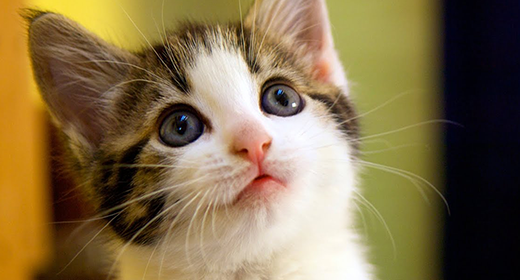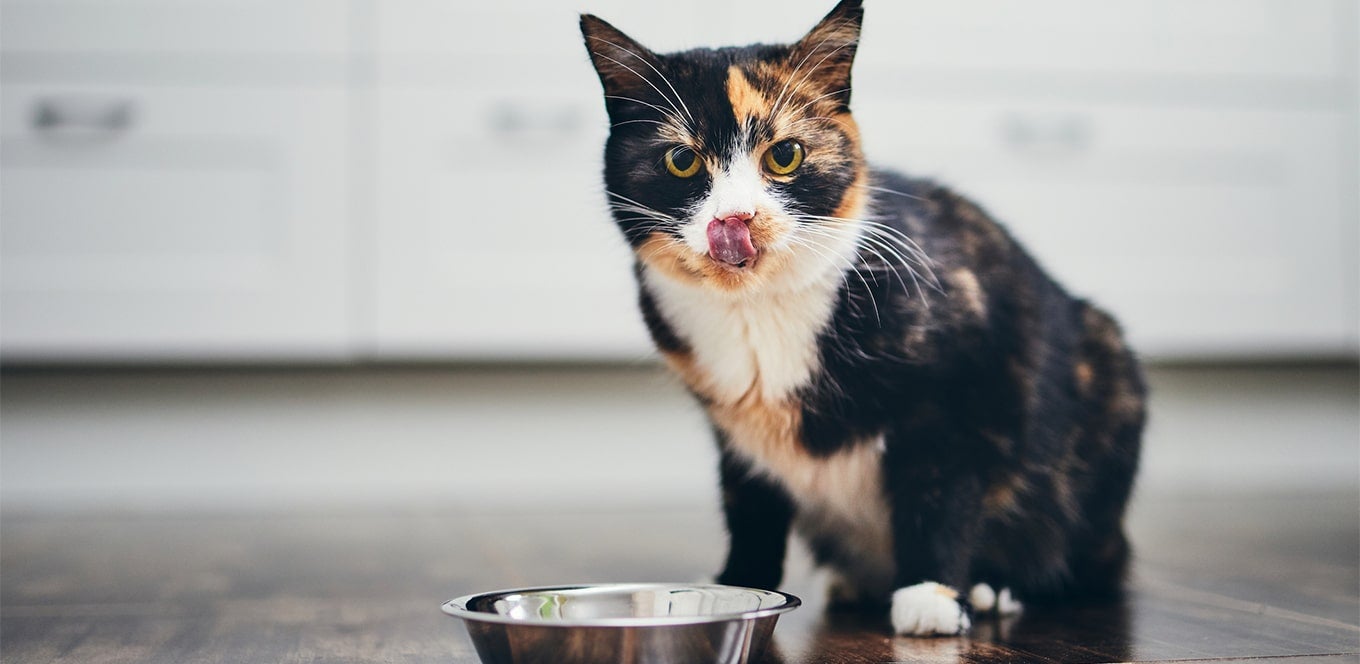

Hi, I'm Caitlin Lewis, Community Outreach Manager for the Humane Society of Greater Dayton, on behalf of IAMS. Wanting to adopt a cat or kitten, but not sure where to start or what to expect? Caitlin Lewis, Community Outreach Manager for the Humane Society of Greater Dayton, explains what you should do before you adopt a kitten or cat, including how to choose a cat personality that meshes with your family. Plus, you’ll learn about the adoption process and how to prep your home to make your new cat feel welcome. Hi, I'm Caitlin Lewis, Community Outreach Manager for the Humane Society of Greater Dayton, on behalf of IAMS. Wanting to adopt a cat or kitten, but not sure where to start or what to expect? Well, we're here to talk about everything you need to think about and do before, during, and after a cat adoption, in order to have a great experience for you and to provide a great home for your new pet. Research is a vital part of pet adoption. So we encourage prospective adopters to make several visits to their local animal organizations during the process.
Utilize their websites, so you can clearly understand the needs of your prospective pet, before making this important decision. Before heading to the shelter, you'll want to identify which cat breed would best fit your lifestyle. Fewer than 10% of the world's cats, both in and out of shelters, are purebred. The majority, common house cats, have charmed their way into becoming the number-one most popular pet in the United States. Before heading to the shelter, there are a couple of final considerations for you and your family. If yours is a full-time working household, it is recommended that you pass up kittens and adolescents, cats less than 18 months old, in favor of a more low-key adult, whose energy needs will be easier to meet. If you're a novice cat owner, think twice about excessive cats—excessively shy, aggressive, or demanding—for they may provide too great of a challenge for your first experience. Is coat color or pattern important? By all means, choose a cat who attracts you. But remember that the gorgeous calico hiding at the back of her cage may well go into prolonged hiding once she is released into your home. A cat that is social and relaxed at the shelter usually has the ease to meet the stresses that life throws her way. Consider the whole cat, not just one element. Your best bet is the friendly outgoing cat, who offers an outstretched paw through the cage bars, and who nuzzles and purrs when you hold him in your arms. This profile is a particularly good choice for families with young children. A cat in your life can add warmth, humor, and peace of mind. A cat can teach your child empathy for others, while keeping her secrets. If you can make the commitment, a cat is waiting to enhance your life in ways only a kindred spirit can. Loving pets of all shapes and sizes are waiting in animal shelters, hoping to find a permanent home. But there are many misconceptions about shelter pets. Shelter animals can make wonderful lifelong companions, if only given the chance. People often think shelters contain only the rejects, pets that have a health or behavior problem. This is not true. Shelters are filled with animals that have been surrendered by their owners because of divorce, owner illness, allergies, new babies, and inexperienced owners. Most shelter pets would like nothing more than a chance at a happy life and their own family to share it with. There are so many reasons for adopting from a shelter. Shelters have all types of pets, mixed breeds, purebreds, young and old. Regardless of the shape, size, or breed, most shelter pets are vet checked, healthy, and ready for their new homes, and will likely save you money, too. Adoption fees for shelter pets are typically less expensive than those you would find at a pet store or a breeder. Initial vet checks, vaccines, de-worming, and spay/neuter surgery are already included as part of the cost. You also get literature on caring for your new cat or kitten, plus support and guidance from shelter staff if you have questions. Pet adoption is an exciting but also time-consuming process. It's always best to call ahead to the animal shelter and find out what documents you need to bring with you. Typical items include: Picture identification with your current address If you're renting, bring your lease or a letter from your landlord. It must state that you are permitted to have pets and how many. Your landlord's contact information should also be displayed. If you own your home, you might be requested to provide proof of ownership, references. Have a list of references handy, including their phone numbers, and ask them for permission before using them as a reference. If you've had pets before, including a veterinary reference is a good idea. Cash, debit card, or credit card for paying the adoption fee. Smaller shelters or rescue organizations sometimes don't accept credit cards. Ask before if you're unsure. Everyone in your family. Many shelters require that every person in your household meet the pet you may be adopting. This is to ensure that everyone gets along and agrees to the adoption. Once you've introduced a new cat to the family, you want to make sure they feel at home as quickly as possible. Cats’ ideal refuge is a place where they can go and be with their things: a soft bed, food and water, a scratching post, and plenty of toys. Their area should be away from the rest of the house and out of the line of traffic. Finding just the right cat or kitten for you or your family is a rewarding experience. When that is coupled with bringing them home from a shelter, it is a double reward. By doing your homework and with a little patience, you'll have her home in no time. Let's recap. Do your research. Identify what type of cat would suit your family and lifestyle. Consider adopting from a shelter. And lastly, find out what you'll need to bring to the shelter. I'm Caitlin Lewis, on behalf of IAMS.


Knowing your cat needs a change in their diet is one thing, but knowing how to make that change is something else! Cats are creatures of habit, so it’s not uncommon for them to prefer their current food to anything new. Change disrupts their routine, which can impact their behavior and their digestion.
Thankfully, when the time has come to change your cat’s diet, a little planning and preparation goes a long way toward making the transition easier for them (and for you).
The following tips will help you change your cat’s diet and successfully transition your cat to a new food:
There are lots of reasons to consider changing your cat’s food — maybe you have a new kitten to wean, a kitten who’s all grown up now or an adult cat entering their senior years. In addition to normal aging, advice from the vet is a common reason to change what you’re feeding your cat. Cats that need help reducing their weight or managing excessive hairballs might need the support of a new food designed with those needs in mind. Whatever your reason for changing your cat’s diet, make sure the new food will suit their needs. That way you only have to make the transition once, and can avoid upsetting their stomach by changing the routine too often.
Going slow is paws down the most successful way to ease your cat into a different diet. Start by mixing 25% new food with 75% familiar food. Slowly change the proportions over the next three days or so by gradually increasing the amount of new food and decreasing the amount of their familiar food. Think of it as a kind of weaning — at the end of this process, you should be feeding (and your cat should be eating) just the new food.
Your cat may choose to eat only the familiar food, or not eat at all … at first. But a healthy cat can miss meals for a day or two without causing health problems. Slow, steady and consistent wins this race!
How would you feel if someone tried to force you to eat strange food you didn’t want?
Aggressively dumping the new food into your cat’s dish and declaring that your cat had better eat it might inspire your cat to do anything besides eat!
A little gentleness in your approach goes a long way. Try using a pleasant tone of voice and encouraging your cat to taste the new food. Even if they don’t go for it at first, a gentle approach still goes over much better than an aggressive one.
Cats train us as much as we train them. Giving in to their demands reinforces that their refusal to eat the new food is acceptable, which makes transitioning to the new diet even more challenging in the long run.
So don’t give up! Don’t be tempted to revert back to your cat’s familiar foods, and don’t give your cat treats or table scraps during the initial three-day period.
This is the toughest dietary transition of them all, but there are a few ways to make the process easier. If your cat resists eating dry food for more than a few meals, try mixing a little warm water with it and maybe even warming the moistened food in the microwave for a few seconds.
If you mix dry food with water, remember to discard any uneaten leftovers after 20 minutes to prevent spoilage. (The same rule applies for wet food.) After your cat is used to the moistened dry food, you can gradually transition to serving the same food dry.
Changing your cat’s diet is sometimes necessary to help them live a happy, healthy life. The process of switching what, how or how often you feed your cat can be a little bumpy, but you can do it! By going slowly, staying patient and encouraging, sticking to the plan and making the transition as easy as possible, you’ll be giving your cat what they need and helping them adjust as comfortably as possible.